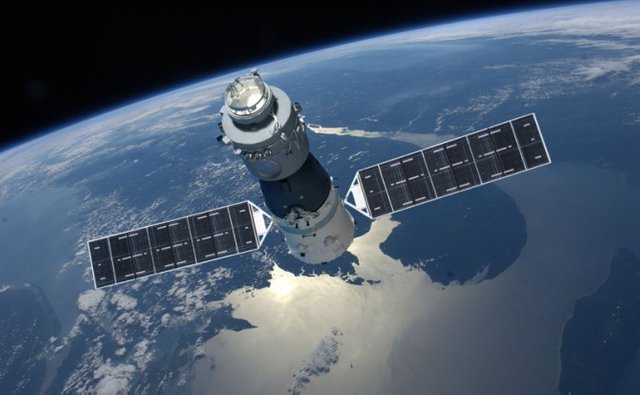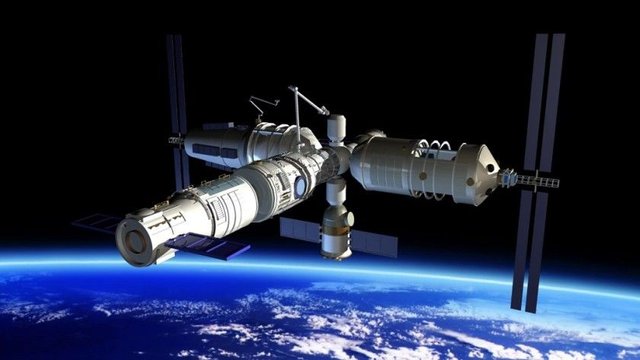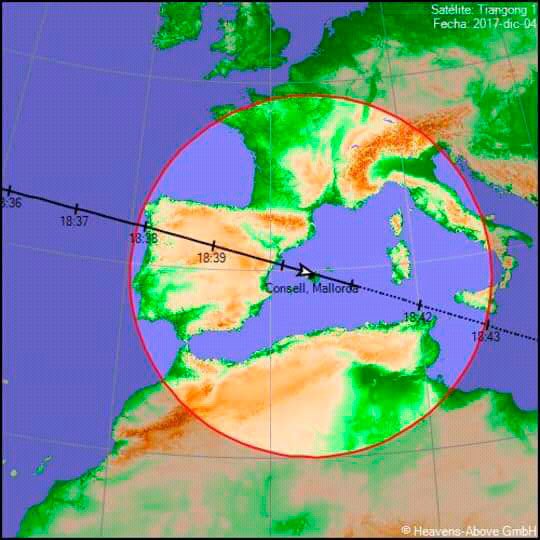The Tiangong-1 space station is about to re-enter the atmosphere and nobody knows where it will fall ...
Hello Steemit! They knew that Tiangong-1, the first Chinese space station, is out of control and will fall on the planet in a matter of weeks.
In 2016, China lost contact with Tiangong-1.
Tiangong-1, which was launched in 2011, was the first station in China put into orbit. It was destined to work for two years, until 2013, but its decision makers decided to keep it in orbit in suspension to gather more information about its components. In 2013 he replaced it with Tiangong-2, so since then he has not stepped on any astronaut.
However, by mid-2016, satellite tracking followers warned that Tiangong-1 had begun to lose control. But it was not until months later that China admitted to having lost contact with Tiangong-1 and could not establish a controlled income.
For its part, the European Space Agency believes that the device, with a weight of 8.5 tons, will re-enter the Earth's atmosphere sometime between March 24 and April 19.

Predicting the time and place of the fall of Tiangong-1 is very difficult. Complete an orbit around the Earth every hour and a half, small changes in the orientation or density of the atmosphere can vary its trajectory of descent.
The space engineering specialists of Aerospace Corporation (a non-profit scientific organization that advises space agencies and aeronautics companies) explain that most of the station will disintegrate upon entering the atmosphere and could in fact give us a nice show of lights in the sky. In Aerospace they also remember that no one has ever died as a result of the reentry into the atmosphere of space junk. Something much bigger is needed for their remains to reach Earth.

Not everyone agrees with this statement. Astrophysicist Jonathan McDowell of Harvard University believes there is a possibility that debris weighing up to 200 kilos may fall to the ground.
According to the agency, "on board the spacecraft there may be a highly toxic and corrosive substance, called hydrazine, which could survive reentry." With which, Aerospace Corporation recommends not touching the remains or inhaling vapors that can be released.
Reveals where and when the Chinese space station will land on Earth:
However, fragments of up to a hundred kilos could survive, which would impact a strip located between the latitudes of 43 ° north and 43 ° south. The region includes all of Africa and Oceania, a good part of America, Southeast Asia (including virtually all of China) and southern Europe. Near the limits of this strip is where the probability of impact is greater. The center and the north of Spain are in this area.

https://actualidad.rt.com/actualidad/265015-mapa-caer-tierra-estacion-espacial-toxica-china
https://es.gizmodo.com/la-esa-calcula-que-la-estacion-espacial-china-tiangong-1823605359
Very informative and fascinating. The real question is: "What are they not telling us?" NASA is the worse. Seems from the estimated trajectory it will land in the ocean. The toxic chemicals seem like a concern too. Lots of space-junk above us, we don't even know about!